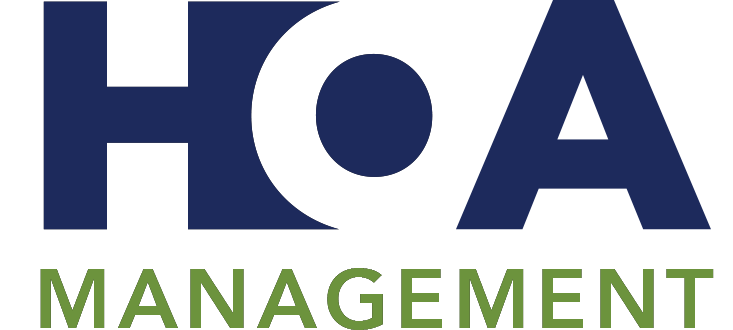HOA Management Companies Near Austin: Enhancing Area Living
Exploring the Core of HOA Management: Solutions Gave and Functional Framework
In the detailed web of Homeowners' Association (HOA) monitoring lies a world of services and functional intricacies that create the foundation of unified area living. From looking after economic issues to imposing neighborhood policies and policies, HOA management plays a pivotal duty in maintaining residential property worths and promoting a sense of community amongst citizens. As we peel back the layers of services given and the operational framework that supports them, a much deeper understanding of the intricacies and nuances of HOA monitoring emerges. Join us as we decipher the core components that drive the seamless functioning of HOAs, clarifying the complexities that usually go undetected but are essential for the smooth procedure of these area companies.

Value of HOA Administration Services
Efficiency in HOA monitoring services is basic for cultivating a harmonious community environment and guaranteeing the smooth operation of common services. HOA Management Companies Austin. House owners' associations play an important function in maintaining property worths, imposing community rules, and facilitating needed repair work and upkeep. By effectively handling services such as landscape design, safety, financial preparation, and supplier contracts, HOAs can enhance the general quality of life for homeowners
Efficient HOA administration solutions likewise add to the establishment of clear interaction channels in between board participants, residents, and outside stakeholders. Clear interaction regarding neighborhood choices, budget plan appropriations, and upcoming tasks helps develop trust fund and collaboration within the area. Streamlined monitoring solutions enable HOAs to respond immediately to residents' problems and address upkeep issues in a timely manner, additional advertising resident complete satisfaction and neighborhood wellness.
Trick Features of HOA Management
In the world of homeowners' associations, the successful execution of essential features is paramount to the effective management and operation of the community. One important feature of HOA monitoring is financial management. This involves creating and managing budget plans, gathering fees, paying bills, and guaranteeing financial stability for the association. One more crucial feature is administrative support, that includes record-keeping, organizing conferences, connecting with homeowners, and enforcing community regulations and laws. Upkeep oversight is additionally important, as HOA managers are in charge of keeping typical areas, collaborating repair services, and making sure the general upkeep of the area. In addition, strategic preparation plays a crucial role in HOA monitoring, including lasting setting goal, area enhancement jobs, and ensuring the organization's sustainability. Efficient communication both within the HOA board and with homeowners is essential for transparency and community involvement. By effectively executing these crucial functions, HOA monitoring can advertise harmony, home worth recognition, and an enhanced lifestyle within the area.
Crucial Operational Structure Elements
An integral aspect of effective HOA monitoring exists in establishing and maintaining vital operational structure parts. Without a solid financial framework, an HOA might battle to fund vital services and maintenance.

Communication systems additionally form a critical part of the operational framework. Efficient interaction networks make certain that residents are informed around essential updates, upcoming events, and any type of modifications in plans. HOA Management Companies Austin. Openness and availability next page in interaction add to a harmonious relationship between the HOA board and the citizens, fostering a feeling of depend on and partnership within the neighborhood
Innovation Combination in HOA Administration
To improve operational effectiveness and streamline interaction processes, welcoming innovation integration in HOA administration is necessary for modern home owners' associations. These modern technologies can automate tasks such as resident communication, maintenance demands, financial administration, and document storage space, reducing hand-operated errors and conserving time for HOA board members and residential property managers.
Additionally, integrating on the internet settlement systems helps with prompt collection of costs and charges, enhancing financial security. Interaction tools like area portals or mobile apps offer convenient channels for homeowners to stay notified regarding HOA news, occasions, and plans. Additionally, leveraging information analytics via integrated systems allows for much better decision-making based upon understandings right into trends and performance metrics. Overall, innovation assimilation empowers HOAs to operate much more effectively, improve resident contentment, and adapt to the digital era's demands.
Challenges in HOA Administration Workflow
Navigating the complex landscape of HOA management operations presents various hurdles that require strategic remedies and experienced handling by board members and home supervisors. One of the substantial obstacles encountered in HOA management procedures is economic administration. Stabilizing the spending plan, accumulating fees, and making certain costs are effectively covered while keeping resident fulfillment can be a fragile balancing act. In addition, implementing rules and policies within the area presents another barrier. Striking an equilibrium in between upholding standards and maintaining favorable relationships with homeowners requires finesse and diplomacy.
 Communication failures also provide an usual challenge in HOA administration. Guaranteeing all stakeholders are educated, involved, and listened to is necessary for a well-functioning community, yet achieving this can be challenging. Keeping up with advancing legal needs and staying compliant adds one more layer of complexity to HOA procedures. Adjusting to transforming laws and policies while making sure the area remains well-managed needs continuous alertness and education and learning. Basically, dealing with these obstacles needs aggressive preparation, clear interaction, and a deep understanding of the intricacies of HOA management.
Communication failures also provide an usual challenge in HOA administration. Guaranteeing all stakeholders are educated, involved, and listened to is necessary for a well-functioning community, yet achieving this can be challenging. Keeping up with advancing legal needs and staying compliant adds one more layer of complexity to HOA procedures. Adjusting to transforming laws and policies while making sure the area remains well-managed needs continuous alertness and education and learning. Basically, dealing with these obstacles needs aggressive preparation, clear interaction, and a deep understanding of the intricacies of HOA management. Conclusion
The vital features of HOA administration include monetary administration, building upkeep, and policy enforcement. Despite encountering challenges, efficient HOA administration is necessary for the total wellness of area locals.
From managing financial matters to implementing area policies and regulations, straight from the source HOA administration plays an essential duty in maintaining residential property values and promoting a feeling of neighborhood among locals. Structured monitoring services allow HOAs to react immediately to locals' problems and address upkeep problems in a prompt manner, further advertising resident satisfaction and community wellness.
One critical feature of HOA monitoring is monetary management. One of the considerable obstacles dealt with in HOA monitoring operations is economic monitoring. The key functions of HOA management include monetary administration, residential or commercial property upkeep, and policy enforcement.